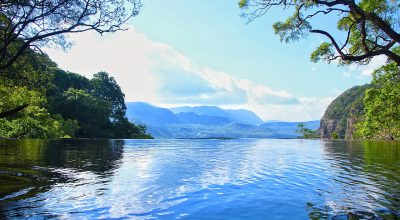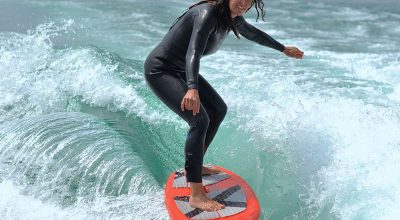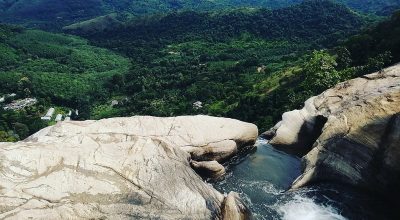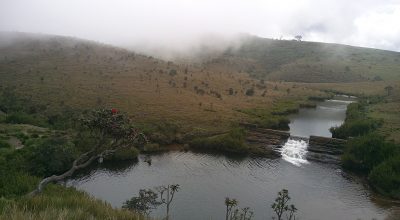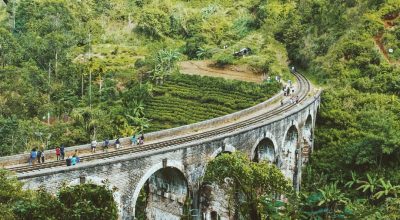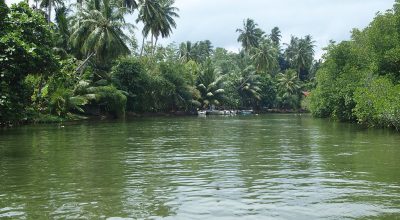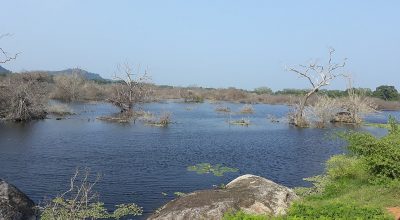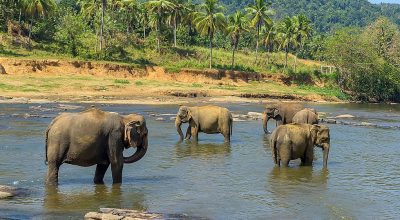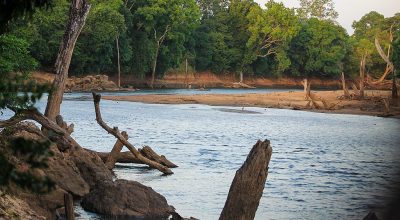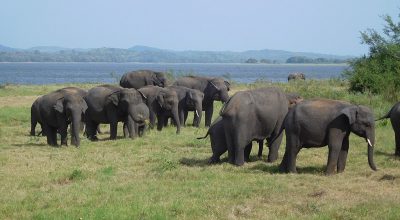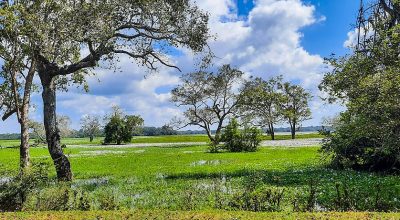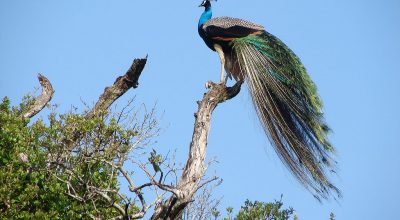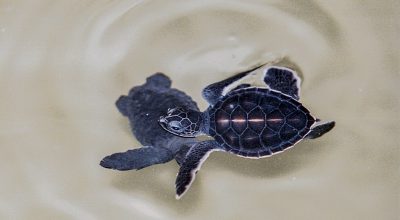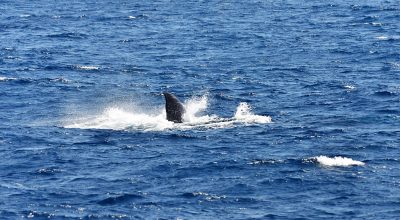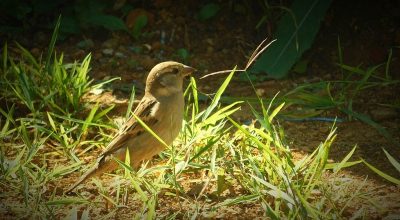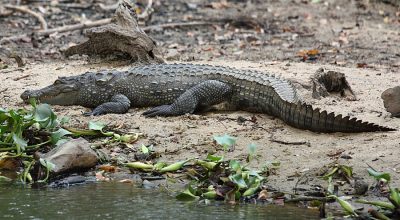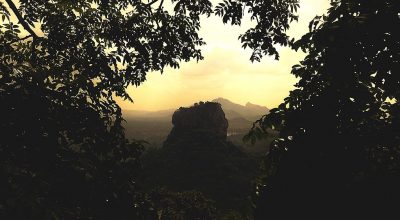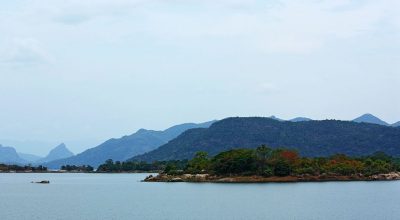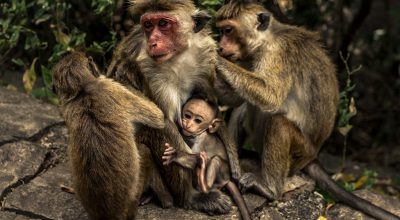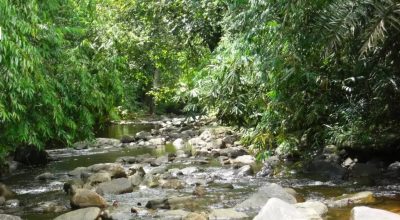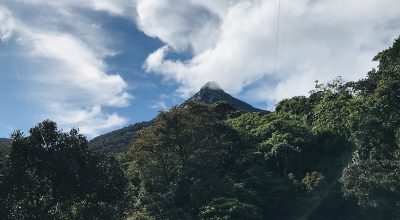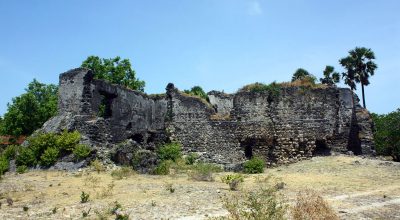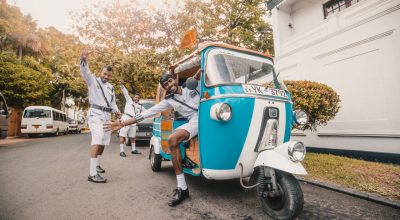Adventure & Wildlife
Sri Lanka’s variety of mini climates not only gives it a wealth of fauna and flora but also rugged terrain, high peaks, deep chasms, mountain gaps, high water falls and snaking rivers all ideal for eco, nature-adventures trekking trails for the enthusiast. If its hiking/trekking trails or adventure you are interested in, Sri Lanka’s mist covered central mountains in Ella offers marvelous opportunities.
Trek through the nature of Horton plains, an environment characterized by forest patches, grasslands along with steep mountain passes, Trekking trails to Adams peak (Sri Pada) ascent the holy mountain to witness the mystic shadow of the peak across the lowland plains, or if you are in Kandy the knuckles range wilderness area which will take your breath away literally speaks of adventure and nature.
Sri Lanka’s wildlife is as varied as the island itself, ranging from elephants and leopards to marine life and a vast number of different birds, and Sri Lanka is now one of the best places in the world to see whales, including the mighty blue whale.
With 12% of the country designated for wildlife protection, it is easy to get a taste of Sri Lankan wildlife: safari parks and sanctuaries, particularly in the southern and central zones, offer the easiest way to see animals in their natural habitat. Stay alert for a sighting of the endangered leopard; take your time as you watch the elephants feeding and washing in a tank or lagoon or walk quietly along the beaches of the west and south coast near to marine turtles as they lay their eggs.
Rafting and white water rafting are recreational outdoor activities which use an inflatable raft to navigate a river or other body of water. This is often done on whitewater or different degrees of rough water. Dealing with risk and the need for teamwork is often a part of the experience.
The Knuckles Mountain Range lies in central Sri Lanka, in the Districts of Matale and Kandy. The range takes its name from a series of recumbent folds and peaks in the west of the massif which resemble the knuckles of clenched fist when viewed from certain locations in the Kandy District.
Whilst this name was assigned by early British surveyors, the Sinhalese residents have traditionally referred to the area as Dumbara Kanduvetiya meaning Mist-laden Mountain Range (Cooray, 1984). The higher montane area is often robed in thick layers of cloud. In addition to its aesthetic value, the range is of great scientific interest. It is a climatic microcosm of the rest of Sri Lanka as the conditions of all the climatic zones in the country are exhibited in the massif.
When it comes to surfing in Sri Lanka, from October to April the South West Coast has perfect conditions and from April to October you should better go to the East Coast of the island. Helpful to know is that, when waves and weather are the best on the West Coast, it is rainy season in the East, when East Coast has the best conditions, it is the rainy season for the South West of the country.
There are a lot more surf sports in the South West than on the East Coast of Sri Lanka. You will find many advanced level surf spots as well as surf spots that are great for beginners. The most famous beginner surf spot is Weligama’s (translated: The sandy village) two-kilometer-long beach break. Weligama has perhaps the best beginner wave you can find in Sri Lanka. Due to the length of the sandy bay, it can accommodate many surfers and does not get crowded easily. In Weligama Main Point you can find some great head-high glassy waves, too.
Flying Ravana is Sri Lanka’s first ever zip-line, located amidst the luscious green estates of Ella. The two-wire zip-line stretches for more than half a kilometre, slides at 80kmph and offers a bird’s-eye view of the beautiful hills of the island. It is exclusively designed for adventure enthusiasts and adrenaline junkies who prefer a not so ordinary hillside experience.
Flying Ravana is truly, Ella in all its glory.
Careful preparation is key when contemplating embarking upon a riveting Sri Lanka sightseeing activity such as zip lining. While a vast range of safety gear ought to be at your beck and call, one must always pay close attention to one’s attire. From safety helmets & harnesses to pulleys coupled with having access to the most durable zip lines that would ensure a world-class zip lining experience, the team at Flying Ravana is dedicated to exceeding your every expectation.
Feel the excitement as you lift off and drift effortlessly over the spectacular scenery. As the climbing goes on unnoticed, find yourself amidst endless horizons of rugged mountains and green fields with only the burners to disturb the peace. Watch your pilot gradually lower the balloon until it is just inches above the evergreen trees. as you pick leaves or touch the treetops, spot a bird or an animal waking to the daybreak.Air Ballooning is an experience unlike traditional air travel, where u cannot feel movement and the silence is absolute.
Leaving you to enjoy the surroundings with utmost serenity and peace. The Tourism Promotion Bureau of Sri Lanka in association with the Ceylon Airship and Balloon Club organizes Sri Lanka Balloon Festival on yearly basis. The participants that arrive from Asia and Europe annually are treated to an exclusive week-long tour of the island. The 2011 Sri Lanka Balloon Festival was held in March.
The 171m-high Diyaluma Falls is Sri Lanka’s third-highest waterfall. Cascading down an escarpment of the Koslanda Plateau, the falls leap over a cliff face and plunge (in one clear drop) to a pool below. It’s more impressive in the rainy season. Diyaluma Falls is 13km west of Wellawaya; any bus heading to Haputale passes by.
Sri Lanka being an island nation, is home to many stunning spots for diving, snorkeling and technical dives such as shipwreck dives, across the island from West coast, to south and all along up to the east coast. The Southern port of call for many ancient ships, the Galle harbor has over 75 such recorded wrecks, out of which 25 are well recorded over the years by sports divers. The Eastern seaboard is also strewn with ship wrecks from many era’s, the most famous lies off the coast of Batticaloa in the form of “HMS Herms” – the world’s first purpose-built aircraft carrier which was built during WWI.
A visit to Horton Plains National Park. This visit involves an early morning wake up and an hour’s drive to the entrance of the park; you may have to wake as early as 5am. Remember to wear warm clothing. The experience is part by jeep and part on foot, we recommend reaching the park no later than 8am to have enough time to see the park, as cloud cover sets in from around 9.30-10am. Your driver will not join you on this game drive, instead you will be taken by a park ranger.
Horton Plains National Park is made up of montane grassland and cloud forest, a plateau at an altitude of 2,100–2,300 meters and rich in biodiversity and the headwaters of three major Sri Lankan rivers. Stone tools dating back to Balangoda culture have been found here. Large herds of Sri Lankan sambar deer feature as typical mammals. NOTE: Park rangers tend to offer very basic descriptions of the park.
The train trip from Ella to Kandy in Sri Lanka, or the other way around, is considered to be one of the most beautiful train trips in the world. This train ride is seven hours long and takes you through stunning landscapes of green and lush tea plantations and mountain views.
The Madu River area surrounding the river are all swampy marshlands covered in mangrove forests. The forest covers over 61 hectares, that is over 150 acres. 14 of the 24 species of mangroves are found in this area. It is interesting to note that mangroves play a huge part in preventing erosion. The large growths of mangrove trees have caused a chain of ecological gain.
The soil protected by the mangrove trees is very fertile. This has caused a rich growth of other wetland plants. Over 300 species, 19 of which are endemic, have been discovered so far. The region continues to be a treasure trove to biologists and ecologists with many undiscovered species in the unreachable depths of the mangrove forests. The plant life in turn have supported a large number of wildlife that depends on them. The largest animal in the region is the wild boar. There are other smaller animals such as monkeys, a variety of squirrels, etc.
Bentota is a lush coastal town, which makes a great scenic backdrop to get in some cycling on your holiday. Once you cross over the Bentota Bridge, the lanes fall quiet, flat and shady. Your guide will lead you through pretty villages, dotted with temples, and small roadside fruit and veg stalls where you might like to stop for a cool coconut water overlooking beautiful waterscapes. As you silently cycle by, you will be overwhelmed by the sounds of daily village life moving to the soundtrack of birds singing.
Yala hosts a variety of ecosystems ranging from moist monsoon forests to freshwater and marine wetlands. Yala harbors 215 bird species including six endemic species of Sri Lanka. The number of mammals that has been recorded from the park is 44, and it has one of the highest leopard densities in the world. The park is teeming with wild boar, deer, leopards, elephants, bears, peacocks, flamingoes, crocodiles and much more. They are mostly aloof, so sightings are special.
A visit to the Millennium Elephant Foundation
Millennium Elephant Foundation (MEF) is a family run non-government organization (NGO) which is dedicated to improving the welfare of domestic elephants throughout Sri Lanka. It is home to the Elephant Walk Experience, an alternative to elephant riding option for tourists which is an ethical, up close and personal experience and among the most interactive enjoyable way to see domestic elephants in Sri Lanka. The foundation provides and funds the care, medical treatments, food, mahout salaries, the running costs of the charity as well as having an on-call Mobile Veterinary Unit which travels around the country treating sick elephants in need.
Udawalawe (General Description) Udawalawe is an important habitat for Sri Lankan elephants, which are attracted to the park because of its reservoir. The rusty-spotted cat, fishing cat and Sri Lankan leopard are members of the family Felidae present in Udawalawe. Sri Lankan sambar deer, Sri Lankan axis deer, Indian muntjac, Sri Lankan spotted chevrotain, wild boar and water buffalo are among other mammal species seen in the park.
The best place to see elephants in Sri Lanka, Minneriya is said to have the largest gathering of elephants in the island, and in Asia. The ancient Minneriya tank (reservoir) contributes to sustaining these giants in the dry season, most of which migrate from the island and gathering can be anywhere between 150 to up to 700. They migrate here from Wasgamuwa National Park, to feast on the grasslands and take shelter in the park’s forest. After the game drive, head back to your hotel.
Lahugala is a small town in Ampara District, Eastern Province of Sri Lanka. The town is located on Colombo-Batticaloa main road approximately 14 km (8.7 mi) away from Pothuvil town. Lahugala Kitulana National Park was declared a national park on 1 October 1980 and is one of the smallest national parks in Sri Lanka.
Despite its land area, the park is considered as an important habitat for Sri Lankan elephants. Magul Maha Vihara, is an archaeologically protected Buddhist temple in Lahugala, built by King Kavanthissa in the 2nd Century BC. The temple lies on the northern edge of the Lahugala National Park. The famed moonstone with a mahout on the elephant can be seen in the temple.
Wasgamuwa National Park is known for its large elephant herds. The National Parks 36,900 hectares of natural forest provide appropriate protection and food to the animals, which are said to number at around 150 elephants. Wasgamuwa National Park is also among the most important bird sanctuaries in Sri Lanka. In addition to the elephants there are of course to see monkeys, sloth bear, numerous species of birds and wildlife. Leopards, however, are unfortunately hard to find. The landscape in the form of lakes and mountains up to an altitude of 500 m also offer trekking opportunities.
The beach at Rekawa village, 10km east of Tangalle, is home to one of the most important sea turtle nesting sites in Sri Lanka, visited by five different species which lay their eggs in the sand here every night throughout the year. The best time to see turtles is between January and April; periods when there’s a full moon. This beach has recorded as many as 23 turtles nesting in one night.
Udawatta Kele Sanctuary or the Royal Forest Park of Kandy is siuated on the hillside behind the Dalada Maligawa or the Temple of the Tooth Relic. This forest extents about 257 acres and is considered to be a vital Bio reserve for the much populated Kandy City.
Centuries back, area surrounding Kandy had been a Rain Forest and the human settlements took place during the era of King Panditha Parakramabahu (1302-1326 AD) and in 1371 AD, King Wickramabahu made Kandy his Kingdom. During this era Kandy was called as “Senkadagala”. This name came into being due to a Brahmin named Senkanda, who lived in a cave at Udawattakele during that era.
Sri Lanka is among the best places in the world to see Blue Whales and Sperm Whales. Large numbers of whales have been sighted off the coast of Mirissa, and a trip out to sea will also present sightings of other marine life like dolphins, sea turtles, flying fish and more. Private sailing trips can be organized on request, which make stops at secluded bays for a bit of snorkeling. A whale watching trip is not to be missed while you’re in the south of Sri Lanka, but can also be organized in the west and east coasts (seasonal).
Sri Lanka is a birder’s paradise, and home to 439 species of birds of which 236 are breeding residents, 203 migrants and the rest vagrants. In addition, there are close to 200 seasonal migratory birds both terrestrial and aquatic, moving away from the Northern winter travelling from as far as Siberia, Scandinavia and Western Europe, arriving around August /September and leaving around April/May. Since Sri Lanka is situated at the farthest southern point away from the south of India with no other landmass until the South Pole, the migrating birds end their long journey in Sri Lanka, making it a regular wintering ground. A variety of birds can be seen across the island, but the main bird sanctuary is Kumana National Park which is considered one of the most important nesting and breeding grounds in Sri Lanka.
Panama Tank- Sri Lanka is located next to Helava Wekanda and is located in the Eastern Province. Famously known as a crocodile point, the small pond and the bird watching area by the road attracts a lot of tourists as it gives an amazing scenery of natural richness.
Set in close proximity to the iconic Sigiriya Rock Fortress, Pidarungula Rock provides an incredible alternative and an additional experience of the views of the UNESCO World Heritage Site, and this rock too dates back to the 6th Century AD, just like Sigiriya. The base of the rock has a temple and this rock is also believed to have been used as a place of worship and a hideout for Sri Lanka’s ancient King Kassapa, who at the time was exiled by ambitious brothers, who eventually killed him. There is also an ancient inscription here, carved into the rock. The visit to the summit of Pidarungula rock involves climbing a series of steps, sometimes through jungle and around the edges of the rock. The hike usually takes about 30 minutes one way, and towards the summit it gets harder as visitors are required to climb over large boulders.
Gal Oya National Park is a 25,900-hectare park inhabited by 32 species of mammals including Common Langur, endemic Toque macaque, Leopard, Sloth Bear, Elephant, Wild Boar, Water Buffalo and three species of deer. For birding enthusiasts, approximately 150 of Sri Lanka’s 430 species of birds have been observed in this very park. The Park is famous for its boat safaris and the best time to experience this is at 6 AM or at 3 PM when the sun is not too harsh. The highlight of the boat safaris is the chance sighting of swimming elephants who swim across the Senanayake Reservoir to the islands in the lake in search of food. The best time to visit Gal Oya National Park is from March to July.
This captivating activity is relatively new to Sri Lanka and is rather an unusual experienced not to be missed. Sri Lanka is dotted with many caves from the Ritigala mountains in the north to the central hills and the southern hillocks of the South.
The most famous being Batatotalena at sudugala, attributed to the “Balangoda man” a prehistoric man whose skeletal remains were uncovered inside this cave, Belilena in Kithulgala and aptly named “Wavulpone” because of the large community of bats living inside with some records indicating a figure as high as hundred thousand.
We start the morning field session of the Monkey tour at 6am with a team briefing that will introduce you to the world of the primates in Polonnaruwa. First species you would encounter would be the majestic Hanuman or the Grey langur and a small troop of very active and gregarious Toque macaques. You watch them wake up and follow them closely for a small part of their day while they venture out to feed and interact socially with each other as well as the other species and other animals and even humans. We enter the Polonnaruwa Archeology grounds and Nature Reserve which is our study area for the macaques and the langurs around 7.15am once the tickets are bought from the Central Cultural Fund ticket office for all foreign guests.
Sinharaja Forest Reserve is a Biosphere Reserve and World Heritage Site by UNESCO and is the country’s last viable area of primary tropical rainforest. More than 60% of the trees are endemic to Sri Lanka and many are considered rare. The reserve’s name translates to ‘Lion Kingdom’, and is strategically located and accessible by 21 km (13 mi) from east to west, and a maximum of 7 km (4.3 mi) from north to south. It is a treasure trove of endemic species, including trees, insects, amphibians, reptiles, birds, and mammals.
At over 7000 feet above sea level, the striking pyramid shaped Adam’s Peak is probably the island’s most remarkable mountain. A depression in the rocky summit resembles a huge footprint, which has been venerated as a sacred sigh from remote antiquity; identified by Buddhists as the Buddha’s footprint, by Hindus as that of Shiva, and by Muslims and Christians, as Adam’s. Climbers taking the Hatton route, which is approximately the halfway point of the mountain, usually start the climb between 1 and 2 am to reach the summit just before sunrise, depending on your fitness level you may like to start a little earlier or later. The climb consists of steep steps, and can be quite strenuous in some parts towards the summit. Hundreds of pilgrims’ flock here in the season between December to April, so the last part of the climb tends to be slow and crowded.
Famous for its wild ponies, left over by the Dutch and its old baobab tree, Delft Island is a must for anyone traveling as far as Jaffna. The journey to Delft happens by boat, and you’ll notice the landscape change further; incredibly serene with the glassy lagoons on one side, and the ocean on the other. Along the way you’ll see fisherman resting their bicycles by the side of the causeway, to wade out with their reed traps and some cast nets. These waters are rich in stocks – we see sizeable crabs, prawns and fish being poured into bags.
There isn’t a funnier origin story of how animals were named, than the story of the Sloth bear! Originally classified as belonging to the sloth family in the 1700s, thus named Bear sloth, Baloo was finally recognized as a bear when he was shipped to Europe from India in 1810! The Bear sloth thus became the Sloth bear, along with the discovery of a few more ‘bear necessities. Similar to his cousin Winnie, all sloth bears love their honey, and much like the classic Pooh Bear cartoons, these bears also climb trees to knock down hives, then greedily gobble up the honey whilst making yummy noises like gurgling and humming as they suck their paws clean!
The Food Safari covers some hotspots in Colombo, as well as numerous super-authentic (local proven favorite) food stops along the way. We guarantee guests will experience some of the best local cuisine this beautiful city has to offer. This tour is not for the faint-hearted, as guests will be taken to some very local street food destinations. We can accommodate anyone and everyone on this tour as we have many options (vegetarian and non-spicy included).

